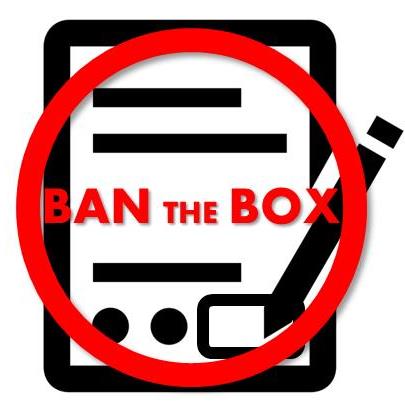THINKING 'OUTSIDE THE BOX' TO GIVE EX-OFFENDERS A SECOND CHANCE
by Alexis Maciel
|

On Oct. 2, 2015, President Obama announced a new executive order, "ban the box," which seeks to protect federal job applicants from bias based on a criminal record. The "box" refers to the section of an application that requires an individual to disclose his or her criminal history, and it has long limited opportunities for ex-offenders to gain meaningful employment. Banning the box means people with a conviction record will get their fair shot at securing a job, restoring their independence, reducing their chances of recidivism, and contributing to the economy. It is one of the most hopeful paths to post-prison reintegration.
Results from a recent National Institute of Justice survey suggest that between 60 percent and 75 percent of formerly incarcerated people are jobless up to a year after their release. Many qualified workers are denied employment, and ex-offenders are returning to their old habits. President Obama noted that minorities make up a large portion of the nation's prison population. According to the National Council on Crime and Delinquency, African Americans were admitted to prison at a rate almost "six times higher" than the rate among whites, and Hispanics were admitted at "two times" the rate among whites (Hartney 2009). Added to the bias posed by disclosing one's criminal history, Latinos and African Americans are more likely to experience discrimination in the workforce, leaving businesses wanting for diversity and disenfranchised communities where employment is frightening low.
Some have questioned ban the box's connection to reduced crime rates and positive community outcomes, arguing that violence and crime stem from the individual, not the situation in which he or she is placed (D'alessio 2015). But the President believes this initiative will produce a "virtuous cycle" of national benefits. Not only will people with past convictions have an opportunity to thrive, but their families and communities will also experience economic and social improvements.
Ban the box has proven to be a bipartisan effort. Senator Cory Brooker (D–N.J.) and Senator Ron Johnson (R–Wis.) have been working on federal legislation to ban the box across the country. Without these measures, said President Obama, it becomes extremely hard for ex-criminals to find jobs. "If you answer yes [to the question, 'Have you been convicted by a court?'], then a lot of times you don't get a call back. . . . You can't dismiss people out of hand simply because of a mistake they made in the past."
Although many people involved in the criminal justice system have committed minor nonviolent crimes, the consequences are often disproportionately severe—their records tarnished by an indelible black mark.
Eighteen states, Washington, D.C., and more than 100 cities and counties have already implemented ban the box or fair chance policies. Many are part of OJJDP's youth violence prevention initiatives, including Boston, Mass.; Chicago, Ill.; Oakland and San Jose, Calif.; Minneapolis, Minn.; Baltimore, Md.; Seattle, Wash.; Detroit, Mich.; Philadelphia, Pa.; Newport News, Va.; Newark, N.J.; Kansas City, Mo.; New Orleans, La.; and Louisville, Ky. These cities have seen the positive outcomes of ban the box within their communities and local economy.
In 1998, Hawaii implemented a ban the box policy. A Honolulu study that tracked the number of repeated crimes after the policy was established found repeat felony offending decreased in the city by 11.4 percent (D'alessio 2015). In Durham, N.C., residents have also seen benefits. A study that examined the initiative's effectiveness reported the number of people with criminal records hired by the county nearly tripled (Atkinson 2014).
Ban the box is rooted in hope, not discrimination, and it is shifting the way America views crime. Above all, it is about fairness, forgiveness, and the opportunity for anyone who is starting anew to truly have a second chance.
References
Daryl V. Atkinson and Kathleen Lockwood. 2014. The Benefits of Ban the Box: A Case Study of Durham, N.C. Southern Coalition for Social Justice.
Stewart J. D'alessio, Lisa Stolzenberg, and Jamie L. Flexon. 2015. "The Effect of Hawaii's Ban the Box Law on Repeat Offending." American Journal of Criminal Justice 40(2):336–52.
Christopher Hartney and Linh Vuong. 2009. Created Equal: Racial and Ethnic Disparities in the U.S. Criminal Justice System. Washington, D.C.: National Council on Crime and Delinquency, 1–28.
Office of Justice Programs. 2015. Research on Reentry and Employment. National Institute of Justice.
|
|
|
